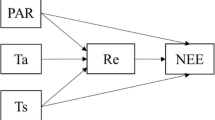Abstract
The objective of this work was to study the performance of the modified chi-square ratio statistic (mCSRS test) proposed for cascade impactor (CI) profile equivalence testing. The test (T) and reference (R) CI profile datasets were generated from different typical CI profile patterns either with or without inter-site correlation (ISC) through Monte Carlo simulations. The mCSRS test pass rate outcome employing previously published critical values was compared with that of critical values derived from different types of datasets. The influence of number of bootstrap iterations (B) on the consistency of the outcome was assessed within the range of 10–10,000 iterations. Power curves were constructed to study the effect of differences in T and R mean stage deposition, T/R variance ratios, differences between T and R profiles in high/low deposition sites, and sample size on the performance of the mCSRS test. The derived critical values exhibited trends based on R product variability: M1 rank-ordered without ISC (at low variability) and the previously published M8 critical values (at high variability) resulted in lowest pass rate outcomes. The precision of the outcome did not increase considerably beyond B = 2000 (default). The probability of showing equivalence between T and R CI profiles increased with (1) a decrease in mean deposition differences, (2) a decrease in T product variability, and (3) an increase in sample size. The mCSRS outcome is less sensitive to low deposition sites that are prone to analytical variability. In conclusion, the mCSRS test is a sensitive and robust method under most conditions.










Similar content being viewed by others
References
Lu D, Lee SL, Lionberger RA, Choi S, Adams W, Caramenico HN, et al. International guidelines for bioequivalence of locally acting orally inhaled drug products: similarities and differences. AAPS J. 2015;17(3):546–57 Available from: http://www.ncbi.nlm.nih.gov/pubmed/25758352. Accessed 27 April 2020.
Morgan B, Strickland H. Performance properties of the population bioequivalence approach for in vitro delivered dose for orally inhaled respiratory products. AAPS J. 2014;16(1):89–100 Available from: http://www.ncbi.nlm.nih.gov/pubmed/24249218. Accessed 27 April 2020.
Sandell D, Mitchell JP. Considerations for designing in vitro bioequivalence (IVBE) studies for pressurized metered dose inhalers (pMDIs) with spacer or valved holding chamber (S/VHC) add-on devices. J Aerosol Med Pulm Drug Deliv. 2014;27(0):1–26 Available from: http://www.ncbi.nlm.nih.gov/pubmed/25089555. Accessed 27 April 2020.
Kurumaddali A, Christopher D, Sandell D, Strickland H, Morgan B, Bulitta J, et al. Cascade impactor equivalence testing: comparison of the performance of the modified chi-square ratio statistic (mCSRS) with the original CSRS and EMA’s average bioequivalence approach. AAPS PharmSciTech. 2019;20(6):249 Available from: http://link.springer.com/10.1208/s12249-019-1443-7. Accessed 27 April 2020.
Weber B, Hochhaus G, Adams W, Lionberger R, Li B, Tsong Y, et al. A stability analysis of a modified version of the chi-square ratio statistic: implications for equivalence testing of aerodynamic particle size distribution. AAPS J. 2013 [cited 2015 May 2];15(1):1–9. Available from: http://www.pubmedcentral.nih.gov/articlerender.fcgi?artid=3535092&tool=pmcentrez&rendertype=abstract.
Christopher D, Adams W, Amann A, Bertha C, Byron PR, Doub W, et al. Product quality research institute evaluation of cascade impactor profiles of pharmaceutical aerosols, part 3: final report on a statistical procedure for determining equivalence. AAPS PharmSciTech. 2007;8(4):E1–10 Available from: http://www.springerlink.com/index/10.1208/pt0801005%5Cnpapers3://publication/doi/10.1208/pt0801005. Accessed 27 April 2020.
Weber B, Lee SL, Lionberger R, Li BV, Tsong Y, Hochhaus G. A sensitivity analysis of the modified chi-square ratio statistic for equivalence testing of aerodynamic particle size distribution. AAPS J. 2013;15(2):465–76. https://doi.org/10.1208/s12248-013-9453-y.
Weber B, Lee SL, Delvadia R, Lionberger R, Li BV, Tsong Y, et al. Application of the modified chi-square ratio statistic in a stepwise procedure for cascade impactor equivalence testing. AAPS J. 2015;17(2):370–9 Available from: http://www.ncbi.nlm.nih.gov/pubmed/25515206%5Cn. http://www.pubmedcentral.nih.gov/articlerender.fcgi?artid=PMC4365081. Accessed 27 April 2020.
Pan Z, Christopher J, Lyapustina S, Chou E. Statistical techniques used in simulation of cascade impactor particle size distribution profiles. Respir Drug Deliv IX. 2004;3:669–72.
Koehler E, Brown E, Haneuse SJPA. On the assessment of Monte Carlo error in simulation-based statistical analyses. Am Stat. 2009;63(2):155–62.
Chernick MR. Bootstrap methods: a guide for practitioners and researchers. Wiley series in probability and statistics 2008. 400 p. Available from: http://books.google.com/books?id=UxDKh5Spwp8C&pgis=1. Accessed 27 April 2020.
Booth JG, Sarkar S. Monte carlo approximation of bootstrap variances. Am Stat. 1998;52(4):354–7.
Dinov I, Christou N, Gould R. Law of large numbers: the theory, applications and technology-based education Ivo. J Stat Educ. 2009;17(1):1–19.
Campbell MJ. Doing clinical trials large enough to achieve adequate reductions in uncertainties about treatment effects. J R Soc Med Suppl. 2013;106(2):68–71.
Author information
Authors and Affiliations
Corresponding author
Additional information
Publisher’s Note
Springer Nature remains neutral with regard to jurisdictional claims in published maps and institutional affiliations.
Rights and permissions
About this article
Cite this article
Kurumaddali, A., Christopher, D., Strickland, H. et al. Evaluation of the Sensitivity and Robustness of Modified Chi-Square Ratio Statistic for Cascade Impactor Equivalence Testing Through Monte Carlo Simulations. AAPS PharmSciTech 21, 147 (2020). https://doi.org/10.1208/s12249-020-01664-6
Received:
Accepted:
Published:
DOI: https://doi.org/10.1208/s12249-020-01664-6




